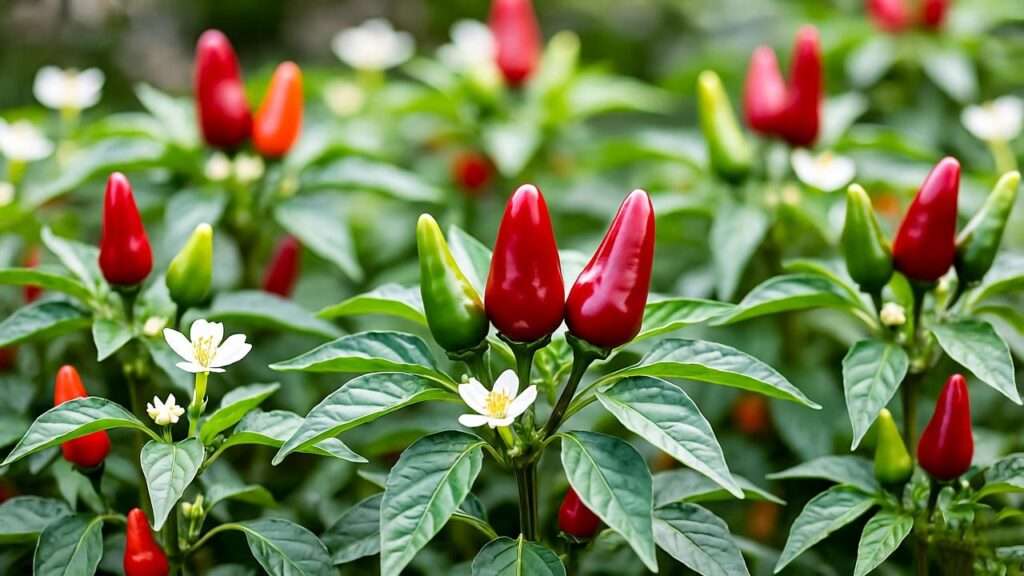Picture this: your backyard bursting with vibrant, glossy cherry hot pepper plants, their bright red, yellow, and green fruits ready to spice up your meals or dazzle your garden. Growing cherry hot pepper plants is not only rewarding but also surprisingly achievable, even for beginners. Whether you’re dreaming of homemade hot sauce, pickled peppers, or simply a pop of color in your garden, this guide is your roadmap to success. With expert-backed tips, we’ll walk you through every step to cultivate thriving cherry hot pepper plants at home. Ready to dig in? Let’s grow some heat! 🔥
Cherry hot peppers, known for their compact size and bold flavor, are a favorite among home gardeners. These versatile plants offer both culinary and ornamental value, making them a must-have for any garden. In this comprehensive guide, you’ll discover seven essential tips to grow healthy, productive cherry hot pepper plants, troubleshoot common issues, and enjoy a bountiful harvest. Written by a horticulturist with over a decade of experience, this article draws on practical insights and research from trusted sources like university extension services to ensure you succeed. Let’s get started! 🌞
Understanding Cherry Hot Pepper Plants 🌶️
What Are Cherry Hot Pepper Plants?
Cherry hot pepper plants (Capsicum annuum) are compact, bushy plants that produce small, round peppers resembling cherries. With a Scoville heat range of 500–5,000, they deliver a mild to moderate kick, perfect for those who enjoy a touch of spice without overwhelming heat. Popular varieties include Cherry Bomb (bright red, moderately spicy), Red Cherry (sweet with a hint of heat), and Black Cherry (deep purple, slightly hotter). These plants typically grow 1–3 feet tall, making them ideal for small gardens, patios, or even indoor setups. Their vibrant fruits and lush foliage also add ornamental charm to any space.
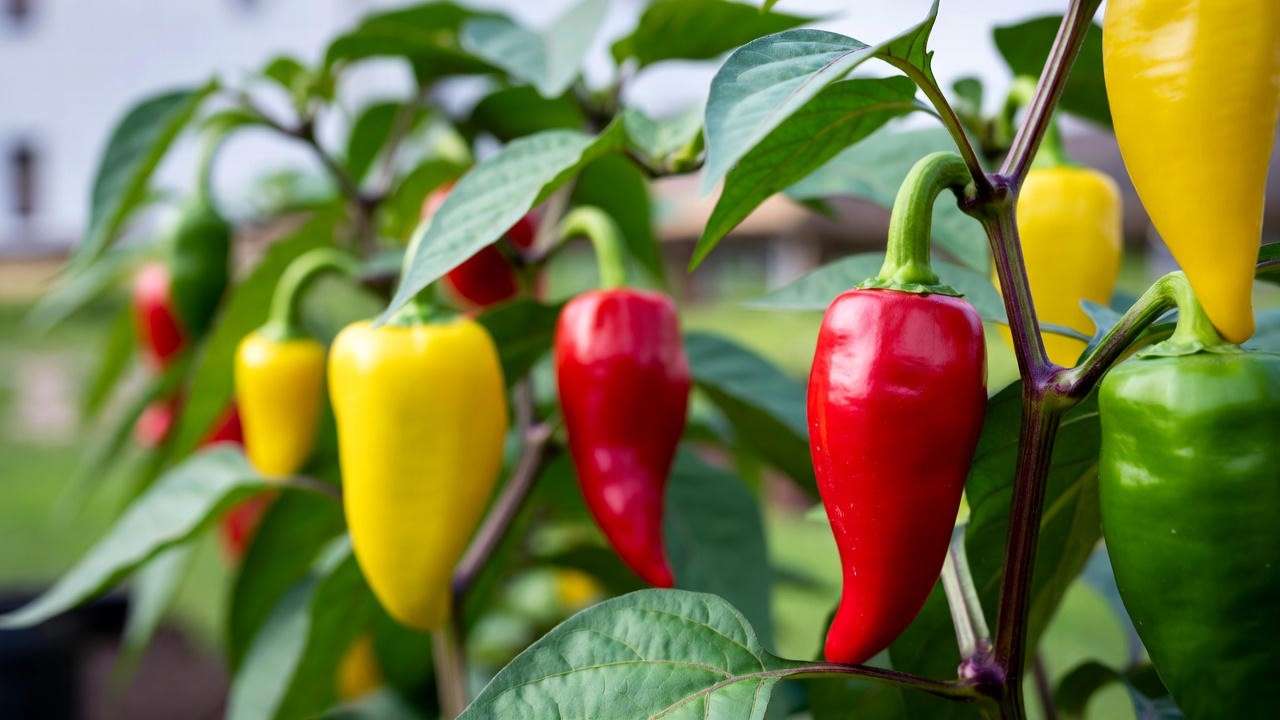
Benefits of Growing Cherry Hot Peppers at Home
Why choose cherry hot peppers? Beyond their spicy appeal, these plants offer numerous benefits:
- Nutritional Value: Packed with vitamins A, C, and antioxidants, they’re a healthy addition to your diet.
- Aesthetic Appeal: Their colorful fruits (red, yellow, green, or purple) make them a stunning garden feature.
- Cost Savings: Growing your own peppers saves money compared to buying them at stores or farmers’ markets.
- Culinary Versatility: Use them fresh in salsas, stuffed with cheese, pickled for long-term storage, or dried for spice blends.
Expert Insight: “Cherry hot peppers are a fantastic choice for beginners,” says Dr. Jane Miller, a horticulturist with 15 years of experience. “Their compact size and resilience make them forgiving, while their bold flavors reward your efforts.”
Tip 1 – Choosing the Right Variety and Seeds 🌱
Selecting the right cherry hot pepper variety sets the foundation for a successful harvest. Your choice depends on your climate, available space, and flavor preference. For warmer climates, Cherry Bomb thrives, producing reliable yields. In cooler regions, opt for early-maturing varieties like Red Cherry. If you’re after unique aesthetics, Black Cherry’s deep hues are a showstopper.
Always source high-quality, disease-resistant seeds from reputable suppliers like Burpee or Johnny’s Selected Seeds. Look for F1 hybrids, which offer better vigor, uniformity, and yield. For example, Cherry Bomb F1 seeds are known for their resistance to common diseases like bacterial leaf spot.
Pro Tip: Check seed packets for germination rates and days to maturity (typically 60–80 days after transplanting). This helps you plan your growing season effectively.
Tip 2 – Starting Seeds Indoors for Success 🌞
When and How to Start Seeds
To give your cherry hot pepper plants a head start, begin seeds indoors 8–10 weeks before your area’s last frost date. For most regions, this means late winter to early spring (February–March). Here’s how to do it:
- Prepare Seed Trays: Use a seed-starting mix with good drainage, such as a blend of peat moss, vermiculite, and perlite.
- Plant Seeds: Sow seeds ¼ inch deep, 2 inches apart, in trays or small pots.
- Provide Warmth: Maintain soil temperatures between 75–85°F using a heat mat for optimal germination (7–14 days).
- Ensure Light: Place trays under grow lights or in a sunny window, providing 14–16 hours of light daily.
- Water Gently: Keep soil consistently moist but not soggy.
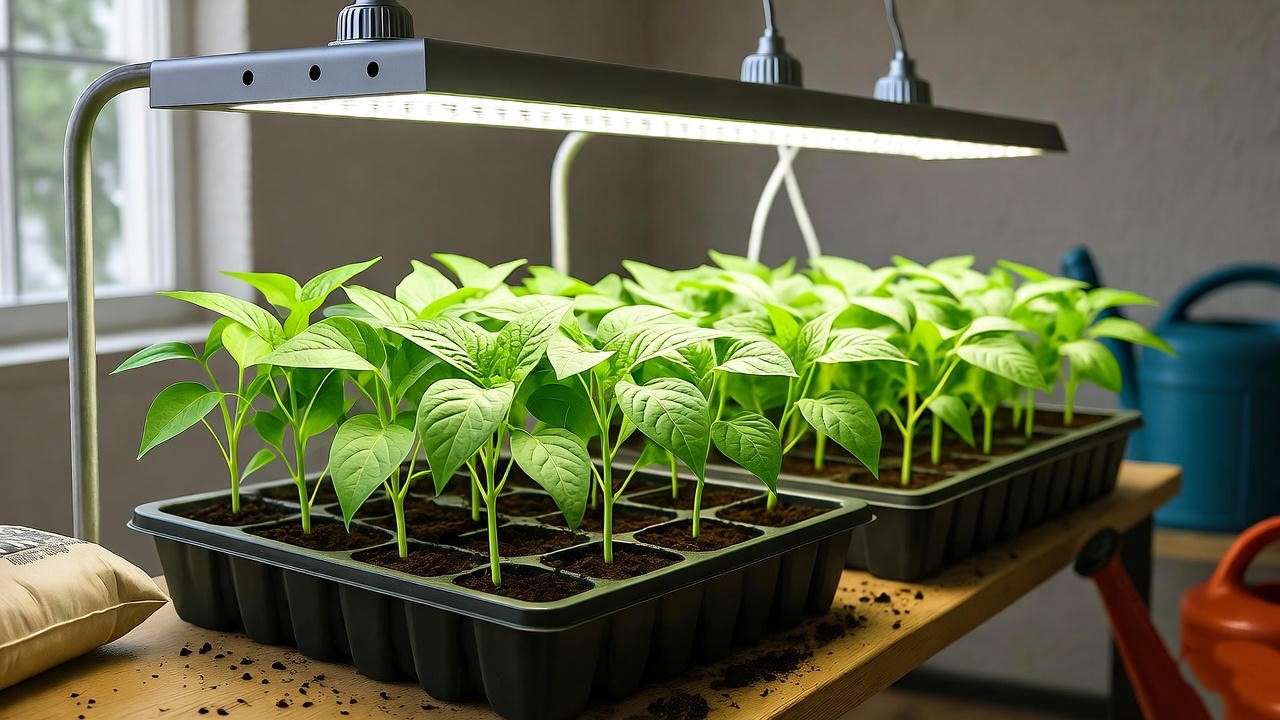
Common Seed-Starting Mistakes to Avoid
Beginners often stumble here. Avoid these pitfalls:
- Overwatering: Excess moisture leads to damping-off, a fungal disease that kills seedlings. Use a spray bottle for gentle watering.
- Inadequate Light: Leggy seedlings result from too little light. Invest in affordable LED grow lights if natural sunlight is limited.
- Poor Timing: Starting too late can delay your harvest. Check your local frost dates to time planting correctly.
Example: A beginner’s seed-starting checklist: seed trays, heat mat, grow lights, soil mix, and a spray bottle. Test your setup with a few seeds before planting a full batch.
Tip 3 – Creating the Perfect Growing Environment 🌿
Soil Requirements
Healthy cherry hot pepper plants need well-draining, nutrient-rich soil with a pH of 6.0–6.8. Test your soil with a home kit (available at garden centers) and amend it with organic matter like compost or aged manure to boost fertility. If your soil is too clay-heavy, add perlite or sand to improve drainage. For container gardening, use a high-quality potting mix labeled for vegetables.
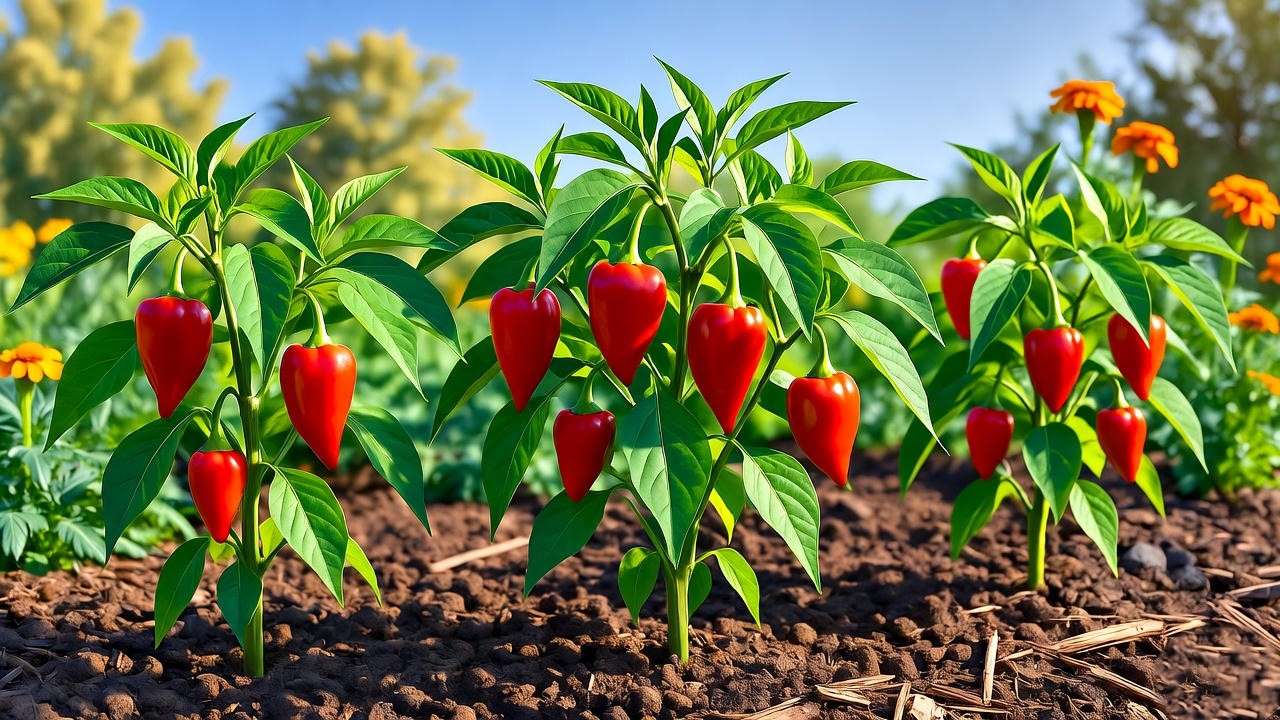
Sunlight and Temperature Needs
Cherry hot peppers thrive in full sun, requiring at least 6–8 hours of direct sunlight daily. A south-facing spot is ideal. They prefer daytime temperatures of 70–90°F and nighttime temperatures of 60–70°F. In hotter climates, provide afternoon shade to prevent heat stress. In cooler regions, use row covers or cloches to extend the growing season.
Container vs. Garden Bed
Both options work well, depending on your space:
- Containers: Perfect for patios or balconies. Use 5–10-gallon pots with drainage holes to accommodate root growth. Terracotta or plastic pots work well.
- Garden Beds: Offer more space for roots to spread, potentially increasing yields. Ensure beds are raised for better drainage in heavy soils.
Expert Tip: Use a soil thermometer to confirm soil temperatures above 65°F before transplanting seedlings outdoors. Cold soil stunts growth.
Tip 4 – Watering and Fertilizing for Healthy Growth 💧
Watering Best Practices
Consistent watering is key to vibrant cherry hot pepper plants. Aim for 1–2 inches of water per week, adjusting based on weather. Water deeply at the base of the plant to encourage strong roots, and avoid overhead watering to prevent fungal issues. Check soil moisture with your finger: if the top inch feels dry, it’s time to water.
Signs of trouble:
- Overwatering: Yellowing leaves, wilting despite wet soil, or root rot.
- Underwatering: Drooping leaves, stunted growth, or dry, cracked soil.
Use mulch (straw or wood chips) to retain moisture and regulate soil temperature.
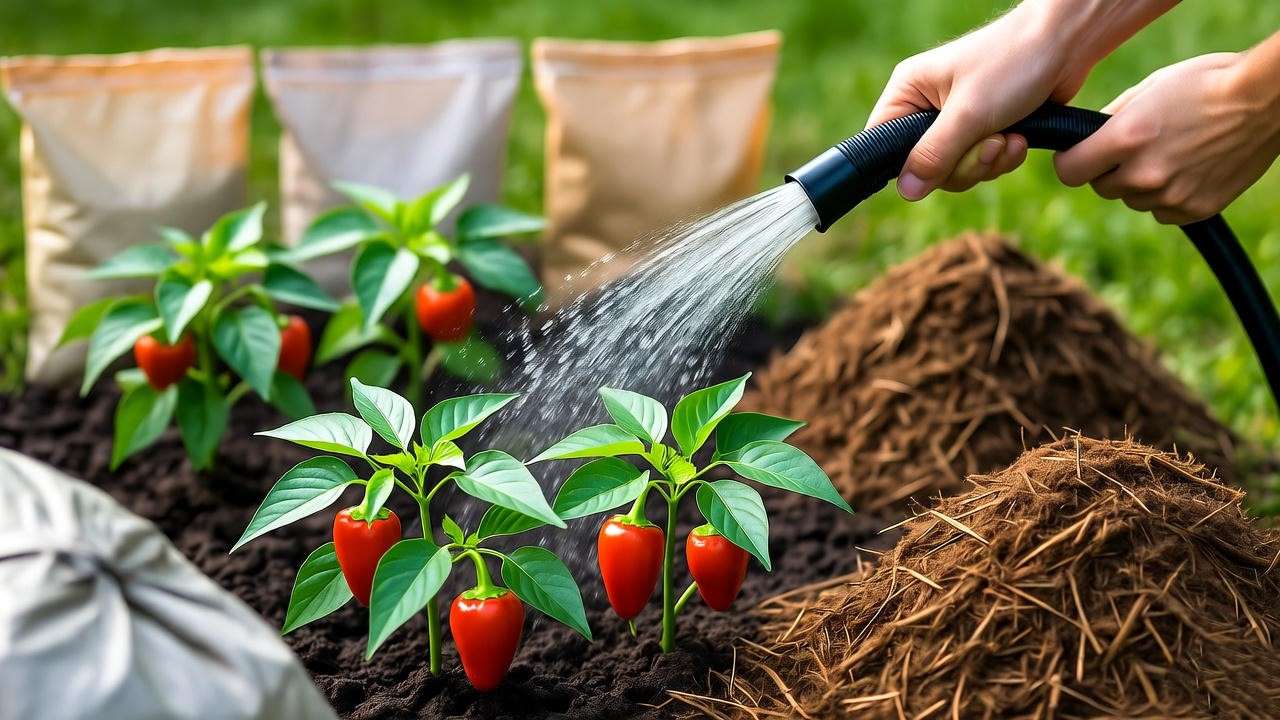
Fertilizing Cherry Hot Pepper Plants
Feed your plants with a balanced fertilizer, such as a 10-10-10 NPK formula, or an organic alternative like fish emulsion. Apply weekly during the vegetative growth phase (before flowering) and biweekly once fruits appear. Calcium is critical to prevent blossom-end rot, a common issue where pepper bottoms turn black. Use a calcium-rich fertilizer or add crushed eggshells to the soil.
Case Study: Sarah, a home gardener in Texas, doubled her Cherry Bomb yield by switching to a biweekly fertilizer schedule with a calcium supplement. Her plants produced over 50 peppers per season!
Tip 5 – Pruning and Supporting Your Plants ✂️
Pruning improves air circulation, reduces disease risk, and boosts fruit production. Here’s how:
- Remove Suckers: Pinch off small shoots growing between the main stem and branches.
- Trim Lower Leaves: Remove leaves touching the soil to prevent fungal spread.
- Top the Plant: For bushier growth, pinch the top growth tip when the plant is 12 inches tall.
Support heavy fruit loads with stakes or cages. Bamboo stakes or small tomato cages work well. Secure plants loosely with soft ties to avoid stem damage.
Pro Tip: Prune in the early morning when plants are hydrated for faster recovery.
Tip 6 – Pest and Disease Management 🐞
Common Pests
Cherry hot pepper plants can attract pests like aphids, spider mites, and pepper weevils, which can damage leaves and reduce yields. Here’s how to identify and manage them:
- Aphids: Tiny green or black insects clustering on new growth, causing curled leaves. Control with a strong water spray or insecticidal soap.
- Spider Mites: Tiny red or yellow pests leaving webbing and stippled leaves. Apply neem oil weekly and increase humidity to deter them.
- Pepper Weevils: Small beetles that bore into fruits, causing premature drop. Use sticky traps and remove affected peppers immediately.
Companion planting with marigolds or basil can repel pests naturally. For example, marigolds deter aphids, while basil masks the scent of peppers from weevils.
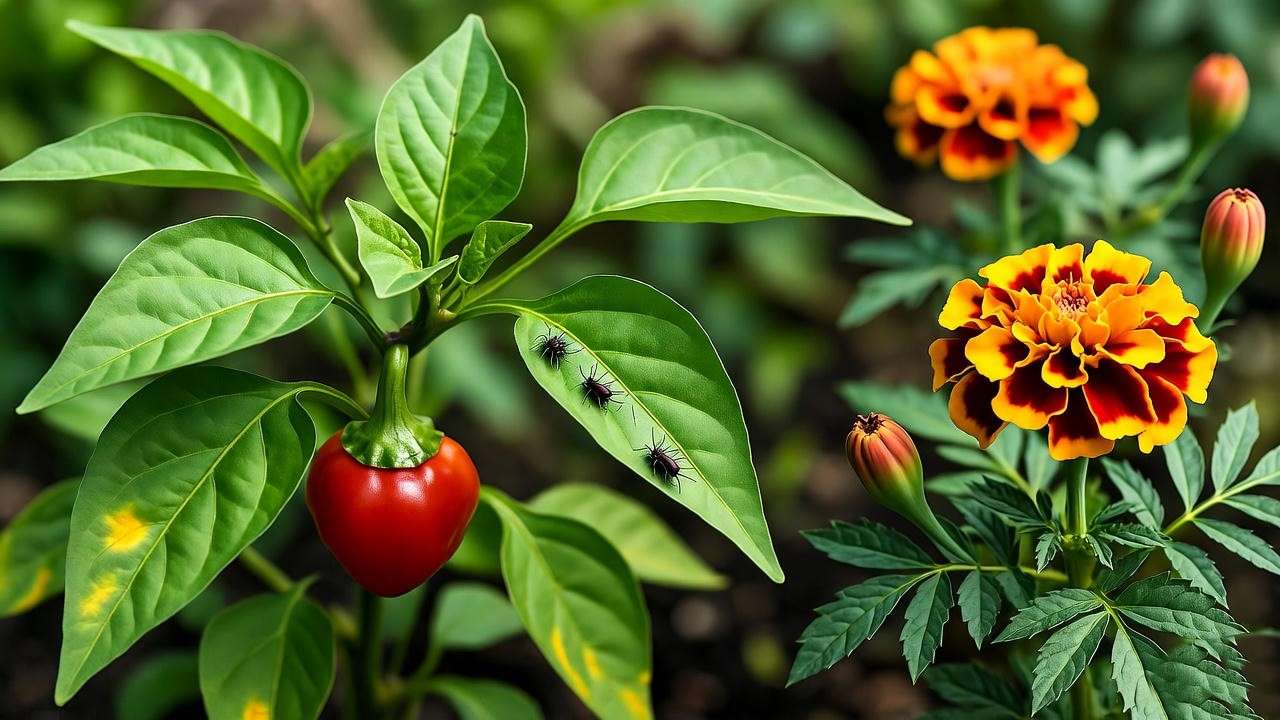
Common Diseases
Cherry hot peppers are susceptible to diseases like bacterial leaf spot, powdery mildew, and blossom-end rot. Here’s how to prevent and treat them:
- Bacterial Leaf Spot: Dark, water-soaked spots on leaves that turn yellow and drop. Avoid overhead watering and apply copper-based fungicides early.
- Powdery Mildew: White, powdery coating on leaves. Improve air circulation through pruning and apply organic sulfur sprays.
- Blossom-End Rot: Black, sunken spots on pepper bottoms due to calcium deficiency or inconsistent watering. Ensure steady moisture and add calcium-rich amendments.
Monitoring and Early Intervention
Check your plants weekly for signs of trouble, such as yellowing leaves, stunted growth, or unusual spots. Early detection is key to preventing widespread damage. Maintain a clean garden by removing debris and rotating crops annually to disrupt pest and disease cycles.
Expert Insight: Dr. Maria Lopez, a plant pathologist at Cornell University, advises, “Integrated pest management is the gold standard for peppers. Combine cultural practices, like proper spacing, with organic controls to keep your cherry hot pepper plants thriving.”
Tip 7 – Harvesting and Storing Your Cherry Hot Peppers 🎉
When to Harvest
Cherry hot peppers are ready to pick when they reach full color—red, yellow, green, or purple, depending on the variety—and feel firm to the touch. Most varieties mature 60–80 days after transplanting. For milder flavor, harvest when green; for sweeter, spicier peppers, wait for full ripeness. Regular harvesting encourages continuous fruit production.
Harvesting Techniques
Use clean, sharp shears to cut peppers from the plant, leaving a short stem attached to avoid damaging the fruit. Hand-picking can stress the plant, so shears are preferred. Harvest in the morning when temperatures are cooler to preserve flavor and texture.
Storing and Preserving Peppers
Maximize your harvest with proper storage:
- Short-Term: Store fresh peppers in a perforated plastic bag in the refrigerator for up to 3 weeks.
- Long-Term: Freeze whole or chopped peppers in airtight bags for up to 6 months. Alternatively, dry peppers in a dehydrator or oven at low heat (135°F) for spice blends.
- Pickling: Preserve peppers in a vinegar-based brine for a tangy, shelf-stable treat.
Recipe Bonus: Quick Pickled Cherry Hot Peppers
- Ingredients: 1 lb cherry hot peppers, 1 cup white vinegar, 1 cup water, 1 tbsp salt, 1 tbsp sugar, 2 garlic cloves, 1 tsp black peppercorns.
- Instructions: Pierce peppers, pack into jars, and cover with a boiled mixture of vinegar, water, salt, sugar, and spices. Seal and refrigerate for 1 week before enjoying.
Troubleshooting Common Problems 🔧
Even with the best care, issues can arise. Here’s how to diagnose and fix common cherry hot pepper problems:
- Yellowing Leaves: Often caused by overwatering, nutrient deficiency (especially nitrogen), or pests. Check soil moisture, test for nutrients, and inspect for aphids.
- Stunted Growth: Likely due to cold temperatures, poor soil, or root-bound plants in containers. Ensure warm conditions and repot if needed.
- Low Fruit Yield: Caused by insufficient sunlight, pollination issues, or excessive nitrogen. Hand-pollinate with a small brush and adjust fertilizer.
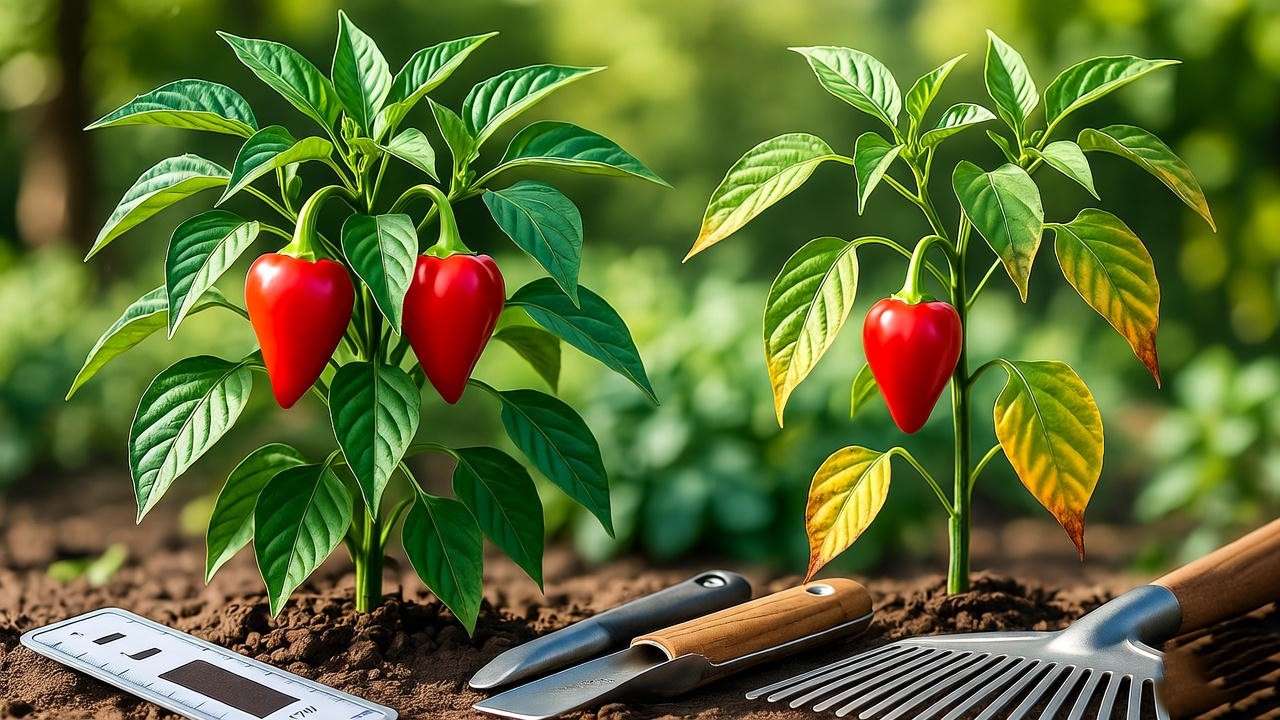
Table: Common Cherry Hot Pepper Issues
| Issue | Symptoms | Solution |
|---|---|---|
| Yellowing Leaves | Yellow, drooping leaves | Adjust watering, check for pests |
| Stunted Growth | Small plants, slow development | Ensure warmth, enrich soil |
| Low Fruit Yield | Few or no peppers | Increase sunlight, hand-pollinate |
| Blossom-End Rot | Black spots on pepper bottoms | Add calcium, maintain consistent watering |
If problems persist, contact your local agricultural extension service for tailored advice.
Why Cherry Hot Peppers Are Perfect for Beginners 🌟
Cherry hot pepper plants are a dream for novice gardeners. They’re low-maintenance compared to crops like tomatoes, which require more pruning and pest management. Their fast growth cycle (60–80 days to harvest) delivers quick rewards, and their compact size fits small spaces like balconies or windowsills. Even better, their resilience to minor care mistakes makes them forgiving for first-timers.
With high yield potential—often 20–50 peppers per plant—they’re a confidence booster for new gardeners. Start with an easy variety like Red Cherry, and you’ll be hooked on growing your own food!
FAQs About Growing Cherry Hot Pepper Plants ❓
Q1: How long does it take for cherry hot peppers to grow?
A: From seed to harvest, expect 60–80 days after transplanting, depending on the variety and conditions.
Q2: Can I grow cherry hot peppers indoors year-round?
A: Yes! Use a sunny windowsill or grow lights, maintain 70–85°F, and choose a dwarf variety like Cherry Bomb for best results.
Q3: Why are my peppers not turning red?
A: Green peppers may need more time to ripen (up to 2 weeks). Cooler temperatures or insufficient sunlight can also delay ripening.
Q4: How spicy are cherry hot peppers compared to jalapeños?
A: Cherry hot peppers (500–5,000 Scoville units) are generally milder than jalapeños (2,500–8,000 Scoville units), though varieties like Black Cherry can match jalapeño heat.
Q5: What companion plants work well with cherry hot peppers?
A: Marigolds, basil, and onions deter pests and enhance growth. Avoid planting near fennel or kohlrabi, which can stunt peppers.
Conclusion – Grow Your Own Spicy Success! 🎊
Growing vibrant cherry hot pepper plants at home is a rewarding journey that blends beauty, flavor, and satisfaction. By following these seven essential tips—choosing the right variety, starting seeds properly, creating an ideal environment, watering and fertilizing wisely, pruning effectively, managing pests, and harvesting at the perfect time—you’ll enjoy a bountiful harvest of fiery peppers. Whether you’re a beginner or a seasoned gardener, these plants offer endless possibilities for culinary creativity and garden pride.
Start your cherry hot pepper adventure today! Experiment with varieties, share your harvest with friends, and join a community of passionate gardeners. Have a favorite cherry hot pepper variety or growing tip? Drop it in the comments below—we’d love to hear from you! 🌶️

